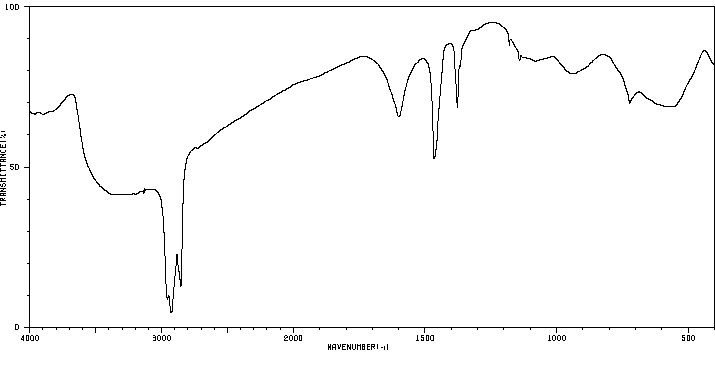| Name: | Aluminum Iodide Anhydrous 99.999% Material Safety Data Sheet |
| Synonym: | |
| CAS: | 7784-23-8 |
Section 1 - Chemical Product MSDS Name:Aluminum Iodide Anhydrous 99.999% Material Safety Data Sheet
Synonym:
Section 2 - COMPOSITION, INFORMATION ON INGREDIENTS | CAS# | Chemical Name | content | EINECS# |
| 7784-23-8 | Aluminum Iodide | 99.999 | 232-054-8 |
Hazard Symbols: C
Risk Phrases: 34
Section 3 - HAZARDS IDENTIFICATION EMERGENCY OVERVIEW
Causes burns.Light sensitive.Air sensitive.Water-reactive.
Potential Health Effects
Eye:
May cause eye irritation and possible burns.
Skin:
May cause severe skin irritation with possible burns, especially if skin is wet or moist.
Ingestion:
May cause severe gastrointestinal tract irritation with nausea, vomiting and possible burns.
Inhalation:
May cause severe respiratory tract irritation and possible burns.
Chronic:
Not available.
Section 4 - FIRST AID MEASURES Eyes: Immediately flush eyes with plenty of water for at least 15 minutes, occasionally lifting the upper and lower eyelids. Get medical aid immediately. Do NOT allow victim to rub eyes or keep eyes closed.
Skin:
Get medical aid immediately. Immediately flush skin with plenty of water for at least 15 minutes while removing contaminated clothing and shoes. Wash clothing before reuse. Destroy contaminated shoes.
Ingestion:
Do not induce vomiting. If victim is conscious and alert, give 2-4 cupfuls of milk or water. Never give anything by mouth to an unconscious person. Get medical aid immediately.
Inhalation:
Get medical aid immediately. Remove from exposure and move to fresh air immediately. If not breathing, give artificial respiration. If breathing is difficult, give oxygen. Do NOT use mouth-to-mouth resuscitation.
Notes to Physician:
Section 5 - FIRE FIGHTING MEASURES General Information:
As in any fire, wear a self-contained breathing apparatus in pressure-demand, MSHA/NIOSH (approved or equivalent), and full protective gear. Reacts violently with water.
Extinguishing Media:
Use agent most appropriate to extinguish fire.
Section 6 - ACCIDENTAL RELEASE MEASURES General Information: Use proper personal protective equipment as indicated in Section 8.
Spills/Leaks:
Absorb spill with inert material (e.g. vermiculite, sand or earth), then place in suitable container. Do not get water inside containers.
Section 7 - HANDLING and STORAGE Handling:
Wash thoroughly after handling. Remove contaminated clothing and wash before reuse. Use only in a well-ventilated area. Do not get in eyes, on skin, or on clothing. Do not ingest or inhale. Store protected from light. Store protected from air. Do not allow contact with water.
Storage:
Store in a cool, dry place. Store in a tightly closed container.
Store protected from light and air.
Section 8 - EXPOSURE CONTROLS, PERSONAL PROTECTION Engineering Controls:
Use adequate ventilation to keep airborne concentrations low.
Exposure Limits CAS# 7784-23-8: United Kingdom, WEL - TWA: (listed as aluminum, soluble salts): 2 mg/m3 TWA United Kingdom, WEL - STEL: (listed as aluminum, soluble salts): mg/m3 STEL Belgium - TWA: (listed as aluminum, soluble salts): 2 mg/m3 VLE ( Al) France - VME: (listed as aluminum, soluble salts): 2 mg/m3 VME Germany: (listed as aluminum, soluble salts): 2 mg/m3 VME Malaysia: (listed as aluminum, soluble salts): 2 mg/m3 TWA (as Al Spain: (listed as aluminum, soluble salts): 2 mg/m3 VLA-ED (as Al Personal Protective Equipment Eyes: Wear appropriate protective eyeglasses or chemical safety goggles as described by OSHA's eye and face protection regulations in 29 CFR 1910.133 or European Standard EN166.
Skin:
Wear appropriate protective gloves to prevent skin exposure.
Clothing:
Wear appropriate protective clothing to prevent skin exposure.
Respirators:
Follow the OSHA respirator regulations found in 29 CFR 1910.134 or European Standard EN 149. Use a NIOSH/MSHA or European Standard EN 149 approved respirator if exposure limits are exceeded or if irritation or other symptoms are experienced.
Section 9 - PHYSICAL AND CHEMICAL PROPERTIES Physical State: Lumps
Color: yellowish-black brown
Odor: Not available.
pH: Not available.
Vapor Pressure: Not available.
Viscosity: Not available.
Boiling Point: 360 deg C
Freezing/Melting Point: 191 deg C
Autoignition Temperature: Not available.
Flash Point: Not available.
Explosion Limits, lower: Not available.
Explosion Limits, upper: Not available.
Decomposition Temperature:
Solubility in water:
Specific Gravity/Density: 3.980
Molecular Formula: AlI3
Molecular Weight: 407.70
Section 10 - STABILITY AND REACTIVITY Chemical Stability:
Stable under normal temperatures and pressures. Combines vigorously with water with the evolution of heat.
Conditions to Avoid:
Light, exposure to air, exposure to moist air or water.
Incompatibilities with Other Materials:
Water.
Hazardous Decomposition Products:
Hydrogen iodide, aluminum oxide.
Hazardous Polymerization: Not available.
Section 11 - TOXICOLOGICAL INFORMATION RTECS#:
CAS# 7784-23-8 unlisted.
LD50/LC50:
Not available.
Carcinogenicity:
Aluminum Iodide - Not listed by ACGIH, IARC, or NTP.
Section 12 - ECOLOGICAL INFORMATION
Section 13 - DISPOSAL CONSIDERATIONS Dispose of in a manner consistent with federal, state, and local regulations.
Section 14 - TRANSPORT INFORMATION IATA
Shipping Name: CORROSIVE SOLID, ACIDIC, INORGANIC, N.O.S.*
Hazard Class: 8
UN Number: 3260
Packing Group: III
IMO
Shipping Name: CORROSIVE SOLID, ACIDIC, INORGANIC, N.O.S.
Hazard Class: 8
UN Number: 3260
Packing Group: III
RID/ADR
Shipping Name: CORROSIVE SOLID, ACIDIC, INORGANIC, N.O.S.
Hazard Class: 8
UN Number: 3260
Packing group: III
Section 15 - REGULATORY INFORMATION European/International Regulations
European Labeling in Accordance with EC Directives
Hazard Symbols: C
Risk Phrases:
R 34 Causes burns.
Safety Phrases:
S 25 Avoid contact with eyes.
S 36/37/39 Wear suitable protective clothing, gloves
and eye/face protection.
S 45 In case of accident or if you feel unwell, seek
medical advice immediately (show the label where
possible).
WGK (Water Danger/Protection)
CAS# 7784-23-8: No information available.
Canada
CAS# 7784-23-8 is listed on Canada's DSL List.
CAS# 7784-23-8 is not listed on Canada's Ingredient Disclosure List.
US FEDERAL
TSCA
CAS# 7784-23-8 is listed on the TSCA inventory.
SECTION 16 - ADDITIONAL INFORMATION N/A







